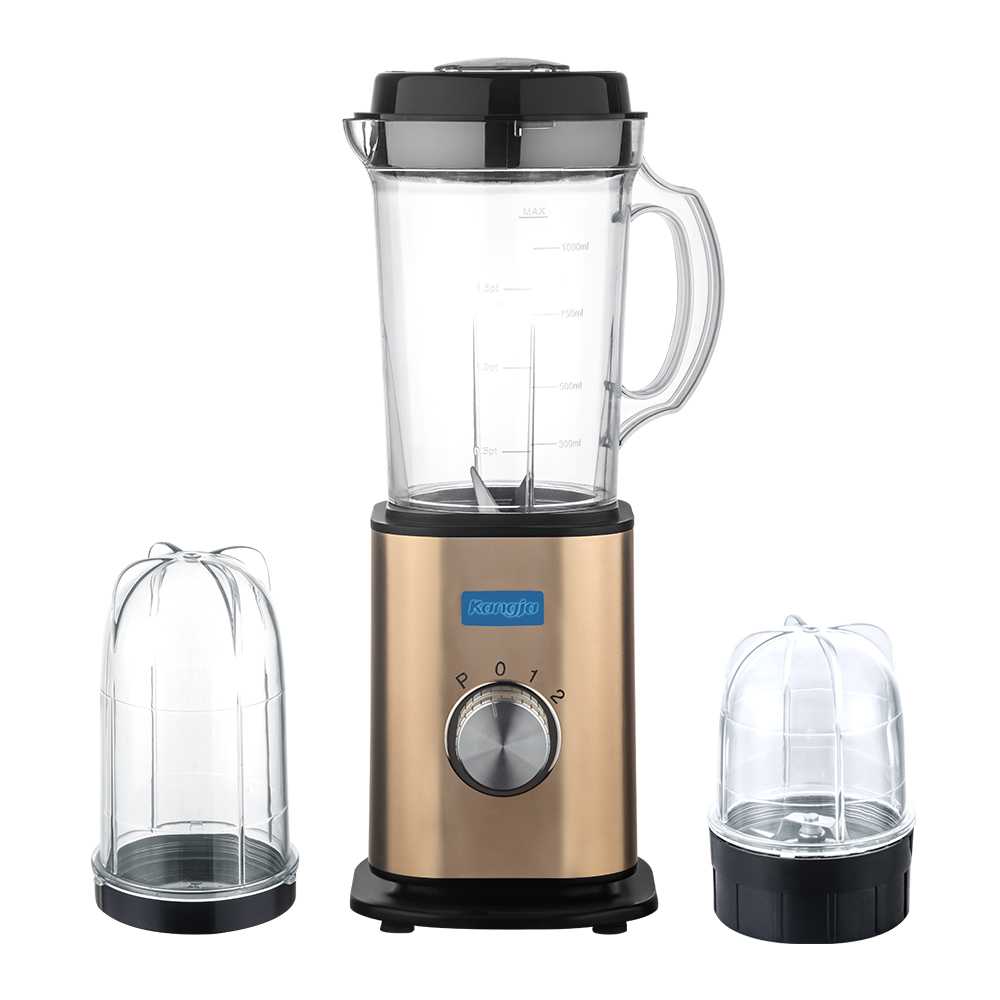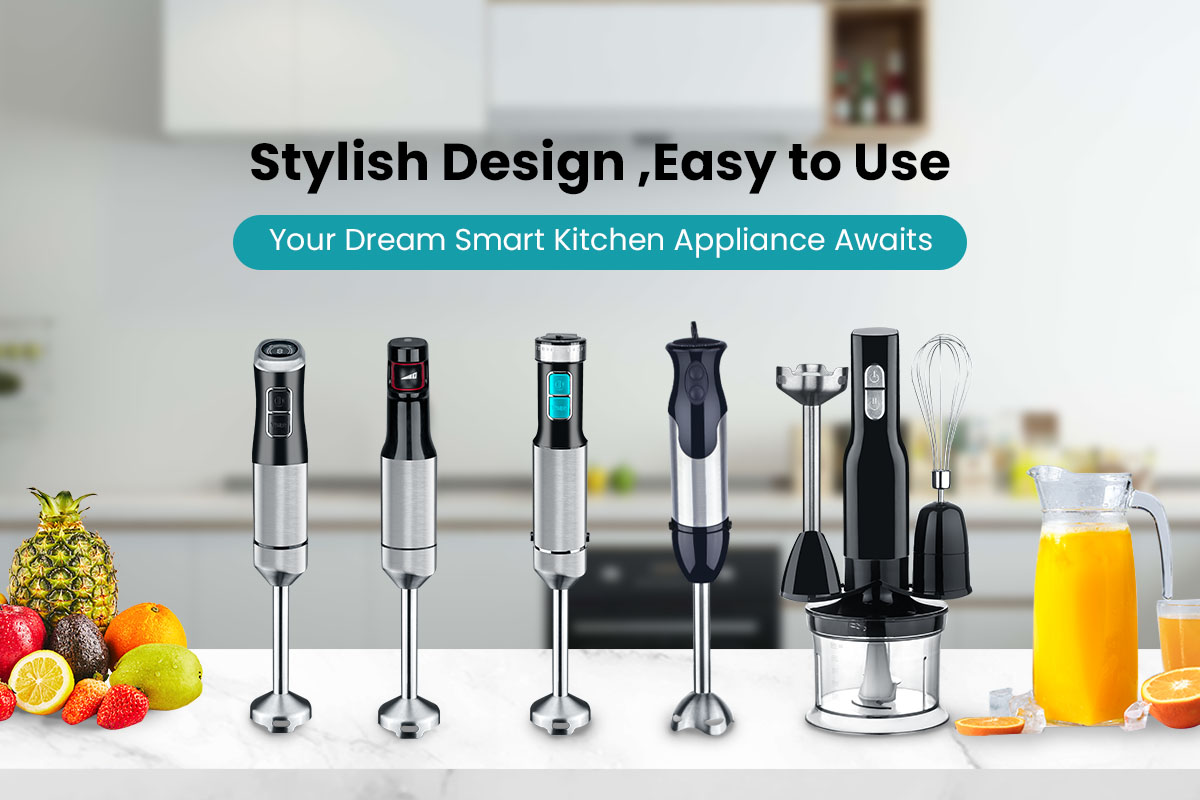Food Processor vs. Blender: What's the Difference?
Out of the many kitchen appliances, Food Processors and blenders are the most common tools used for making different recipes. Although both appliances can accomplish the same thing, they are meant for different purposes and therefore specialize in different areas. For those who want to know which gadget will suit them the best, this article compares food processors with blenders and helps the reader decide which gadget is best for them.

1. What is a food processor?
A food processor is a multi-purpose kitchen appliance that is specially designed to assist in a sequence of food preparation activities. It often offers with a huge container, great number of attachments, and several types of blades that are used to chop, slice, grate, shred, and puree food. food processors are well-suited for solid tasks such as vegetable chopping, fruit slicing, or dough kneading. Additionally, they can effectively assist in making pesto, grinding meat, or mixing batter, which is why they are known as a must-have appliance for busy households.
Pros of Food Processors:
Variety of Use: Can execute numerous functions such as cutting and dough mixing.
Mise en Place Kit: Contains specialized attachments for specific functions.
Proper Cutting Board: Best suited for large volume preparation.
2. What is a Blender?
A blender, on the other hand, is an appliance whose main purpose is to mix, puree, or emulsify food ingredients. It has a cab that is in the form of a jug or pitcher which contains the food together with blades located at the bottom of the jar that allows mixing of the ingredients. The problems of the blender are better solved by the variety of the blenders. For example, smoothies, soups, milkshakes, sauces, and batters may be best made in blending. Solid food ingredients go to liquids and smoother mixtures through a blender which extensively facilitates this process. But using it for solid ingredients mashes or made-from-dense food is not ideal.
Advantages of using Blenders:
Short Blending Times It is well suited for a variety of smoothies, sauces and soups.
Limited control Easy to use without the positioning movements.
Chocolate desserts Many premium grade models cut freeze-fruits or even ice effectively.
3. Fundamental Contrasts between Food Processors and Blenders
Purpose
The most important difference between a food processor and a blender is noted in their use. Food processors were made to perform a number of tasks like kneading, slicing, shredding, or even cutting. These machines would be useful for meal preparations that include solid or dry ingredients, for example, when one has to chop vegetables for a stir fry or when grinding nuts for nut butter. Blenders are specifically used for the purpose of liquefying. They are useful for smoothies, soups, sauces and anything that needs to be liquid in nature.
Shape and Configuration
In many cases, food processors like the Magic bullet are designed with a larger bowl so that larger quantities of ingredients can be processed in one swift motion. They also tend to be more multifunctional, as they come with a variety of blades and attachments which allow for quick processing. Blenders usually include a pitcher or jar and a base that contain the motor and blades which facilitates blending of thicker liquids and softer substances.
Speed and Efficiency
The strength of the blender revolves around its capability to quickly liquefy different combinations, and thus it operates at varying great speeds necessary to prepare smoothies and other beverages. Tough ingredients such as ice, frozen fruits, or seeds are not a problem for these machines as well. However, food processors perform their blending operations at a much slower speed, this is however advantageous as they can be accurately used for blending, slicing, dicing, or chopping of solid ingredients. They also perform better in case of dough kneading or grain and meat grinding.
4. Which One Should You Choose?
The decision on whether a blender or a food processor is used largely depends on the user’s practices while preparing food. Those who often make smoothies, soups or drinks that have to be smoothly textured, a blender is the right option for them. It allows making strategies that are built around liquid based recipes by mixing them up with liquid solutions like puree.
In contrast, if you prepare dishes that include cutting, shredding, chopping or dough kneading frequently then a food processor is a more suitable option. These three appliances are great for meat and vegetable preparation as well as batters and baking doughs.
Conclusion
While both food processors and blenders are valuable tools in the kitchen, they serve different purposes and excel in different areas. Food processors offer versatility and are better suited for solid and dry ingredients, while blenders shine when it comes to liquefying and blending liquids into smooth textures. The right appliance for you ultimately depends on the types of dishes you prepare most often. By understanding their unique functions, you can ensure that you choose the right tool to streamline your cooking and elevate your kitchen game.




